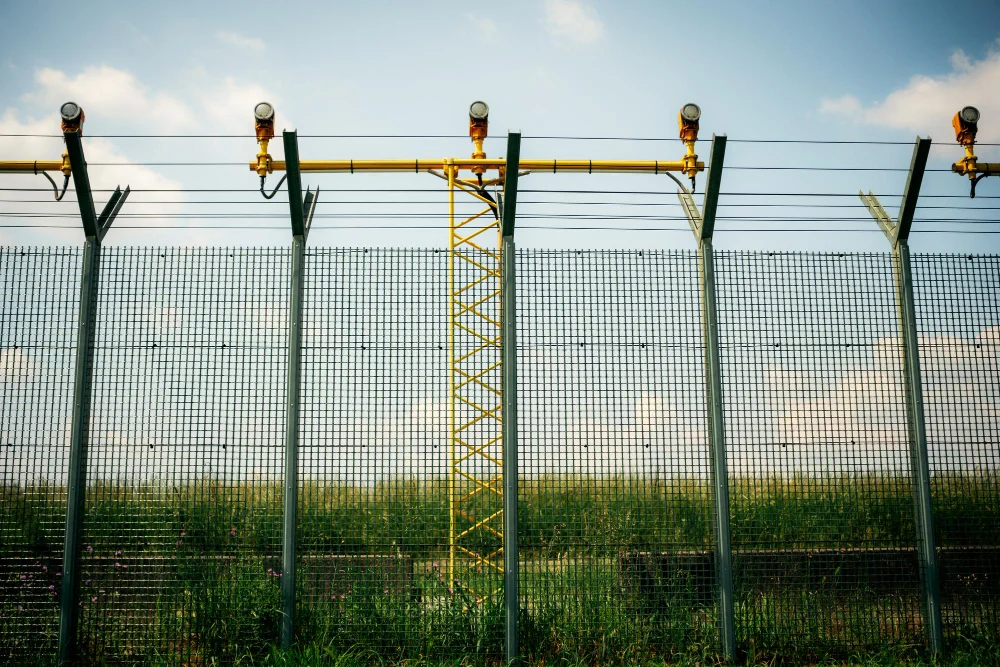As the fall chill creeps in, construction crews in Calgary are focused on wrapping up projects before winter hits. But there’s another deadline creeping up — one set by thieves looking for quick scores on poorly secured sites. Construction site theft spikes in September for a reason: darker evenings, distracted crews, and expensive tools left behind. If you think it won’t happen to your site, think again — it’s not if, it’s when. Let’s break down why this month is high-risk and how you can protect your materials, tools, and bottom line.
The Alarming Surge: Facts and Figures Behind September Theft Rates
September has shown a marked increase in construction site thefts, often linked to the change in weather and project timelines. Various reports indicate that incidents rise by approximately 25% during this month compared to others, leading to significant financial losses for contractors. Understanding these trends is imperative for implementing effective preventative measures to protect your assets.
The Shocking Truth About Construction Site Theft
Construction site theft isn’t just common — it’s rampant. Industry data shows that:
- 21% of construction professionals report theft on a weekly basis
- 63% experience theft at least once a month
- Nearly 9 in 10 tradespeople have been targeted by thieves at some point
(CIOB & TrueLook, Zenduit)
What’s even more alarming? Theft and vandalism are costing the North American construction industry upwards of $1 billion annually. Tools, copper wiring, heavy machinery, and raw materials are top targets—easy to grab and even easier to resell.
September is a peak season for these crimes, especially in Calgary, with shorter daylight hours and tighter project deadlines leading to more unattended equipment after hours.
Comparative Analysis with Previous Years
When comparing September theft rates from the last three years, a clear upward trend emerges. In 2021, theft incidents accounted for 15% of total losses, while in 2022, this figure escalated to 20%. The current year’s figures signal that trends may worsen unless preventative actions are taken. Keeping an eye on these statistics allows you to strategize effectively against potential theft.Comparative Theft Rates Over the Years
| Year | Theft Incidents (%) |
|---|---|
| 2021 | 15% |
| 2022 | 20% |
| 2023 | 25% |
Analysis of the data reveals that theft incidents have risen significantly, with a consistent increase of at least 5% annually. This shift indicates a concerning trend where thieves may be targeting September specifically, likely due to the higher volume of equipment stored on-site as projects ramp up. This pattern underscores the necessity for you to strengthen construction security measures in preparation for the peak theft month. Theft Impact Analysis
| Year | Financial Loss ($ million) |
|---|---|
| 2021 | 10 |
| 2022 | 15 |
| 2023 | 25 |
The Anatomy of a Construction Site: Vulnerabilities Exposed

Construction sites are frequently a patchwork of valuable equipment, tools, and materials, presenting numerous vulnerabilities that thieves exploit. Inadequate fencing, poor lighting, and lax access control make it easier for intruders to enter unnoticed. Understanding these weak points can help you better safeguard your site, ensuring that your investments remain secure as operations ramp up in the fall.
What Do Thieves Steal from Construction Sites?
Thieves aren’t picky — if it’s valuable, portable, and easy to flip, it’s fair game. High on the hit list are power tools, generators, copper wiring, heavy machinery, lumber, and fixtures. These items can vanish fast and reappear just as quickly on black markets or resale platforms.
The cost? Not just the price of replacement — but delayed timelines, increased insurance premiums, and major project headaches. Proactive security isn’t a luxury; it’s protection against bleeding money and losing momentum. Lock it down before they load it up.
Key Weaknesses in Site Security
Many construction sites suffer from inadequate security measures, which can lead to significant vulnerabilities. Lack of surveillance cameras, insufficient lighting, and ineffective perimeter protection create ideal conditions for theft. Additionally, unmonitored access points and poorly trained personnel contribute to the problem, leaving your site exposed to potential losses.
Inadequate security on construction sites often stems from budget constraints and a lack of prioritization. For instance, studies show that approximately 30% of construction sites do not utilize personal identification systems for worker access, allowing unauthorized personnel to blend in easily. Moreover, insufficient investment in surveillance technology can lead to blind spots where theft can occur undetected. Regular evaluations of security measures, coupled with employee training on vigilance, can significantly enhance your site’s defenses against theft.
Theft Prevention Strategies: Tools and Best Practices

Implementing effective theft prevention strategies not only safeguards your assets but also enhances overall site security. Employ a robust combination of technology, training, and procedural practices to create a resilient defense against theft.
Advanced Security Technologies to Implement
Integrating advanced security technologies can significantly deter theft on construction sites. The right tools not only monitor activity but also provide real-time alerts, making it easier to respond to potential threats.
- Video surveillance systems with motion detection
- GPS tracking devices for equipment and vehicles
- Access control systems restricting unauthorized entry
- Smart lighting that activates based on movement
- Alarm systems linked to local authorities
| Technology | Benefit |
|---|---|
| Video surveillance | Deters criminal activity and provides evidence |
| GPS tracking | Locates stolen equipment quickly |
| Access control | Prevents unauthorized personnel from entering |
Training Workers to Recognize and Report Suspicious Activity
Your workforce plays a critical role in theft prevention. When workers are trained to identify suspicious behavior, they become vital eyes and ears on the ground, enhancing site security beyond technological measures.
Establishing a culture of vigilance requires ongoing education. Regular training sessions can empower workers to recognize unusual behavior, such as individuals loitering around the site without apparent purpose. Encouraging staff to report suspicious activity fosters a proactive approach to security; for instance, workers who notice an unfamiliar vehicle parked for an extended period should feel confident alerting a supervisor. Consistent reminders about their role in safeguarding the site can lead to heightened awareness, potentially reducing theft incidents significantly.
The Role of Community: Building Support Networks
Engaging your community can significantly bolster security against construction site theft. By establishing strong networks, you can share information and resources that enhance your overall safety. Local businesses, neighborhoods, and contractors can work together to monitor sites and report suspicious activity. Creating a culture of vigilance not only protects your investments but also fosters community pride and integrity. Regular communication among members can lead to proactive measures, such as alert systems or scheduled patrols, ensuring you’re never alone in the fight against theft.
Collaborating with Local Law Enforcement
Building a partnership with local law enforcement can enhance security measures at your construction site. You can schedule regular visits from officers to discuss concerns and develop strategies to prevent theft. Law enforcement agencies often have resources and crime analysis tools to help you identify high-risk periods or areas, enabling you to mitigate potential threats. By fostering this relationship, you create a strong line of defense against the rising tide of theft.
Forming Mutual Aid Groups Among Contractors
Creating mutual aid groups among contractors enables you to pool resources and share best practices for theft prevention. Collaborating with peers allows for real-time communication about theft incidents and enables you to implement collective strategies to safeguard your projects. These informal networks can also organize joint surveillance efforts and share security technologies, helping to ensure that everyone in your community benefits from enhanced site security.
Such groups can host regular meetings and workshops where members discuss recent theft incidents and collectively brainstorm preventive measures. For instance, you might decide to invest in shared security cameras or establish a watch program that cyclically rotates personnel to monitor sites. This collaborative approach not only reduces costs but fosters a sense of solidarity amongst contractors, making criminal activities less inviting and more challenging to execute. By leveraging each other’s strengths, you enhance the overall resilience of your projects against theft.
Navigating Insurance Claims: What You Need to Know
Encountering theft on a construction site necessitates an informed approach to navigate your insurance claims effectively. Understanding your policy’s specifics, including coverage limits and exclusions, ensures you maximize your recovery potential. Proper documentation and prompt reporting are key to a successful claim submission, as delays can jeopardize your compensation. Familiarizing yourself with your insurer’s processes can alleviate stress during an already challenging situation.
Understanding Coverage Limits and Exclusions
Your insurance policy typically specifies coverage limits, dictating the maximum compensation available for stolen items. Exclusions may include certain high-value tools or machinery, requiring you to verify what is covered beforehand. Reviewing your policy ensures you are aware of any gaps, helping you make informed decisions on additional coverage you may need to safeguard your assets effectively.
Steps for Filing a Claim After a Construction Site Theft Incident
Initiating a claim after a theft involves several straightforward steps. First, document the theft with photos and detailed notes on what was stolen. Next, contact your insurance provider promptly to report the incident, providing them with all pertinent information. Filing the police report is important, as insurers often require it for claims. Maintain records of all communications with your insurer to ensure a smooth claims process.
Collecting evidence is a critical component of filing your claim. Capture images of the theft scene, ensuring you cover both the perimeter and the specific areas affected. Make a detailed inventory of stolen items, including serial numbers, purchase receipts, and the age of the assets. Contacting local law enforcement as soon as you discover the theft is vital, as a police report forms a fundamental part of your claim. Keeping track of your interactions with your insurer, noting dates and key points discussed, can streamline the process and help in case of disputes over your claim. A well-organized submission increases your chances of a prompt and favorable resolution.
Don’t Let Thieves Write Off Your Hard Work
Here’s the cold, hard truth: construction site theft isn’t a minor hiccup—it’s a full-blown budget-buster. Across North America, stolen tools and equipment from construction sites can account for 5% to 20% of total build costs—not chump change by any stretch. en.wikipedia.org
That means for a project costing $500,000, you’re staring at potential losses between $25,000 and $100,000 in missing gear or shattered timelines. September? That’s prime time for opportunistic thieves — shorter nights, less oversight, and high-value items left out in the open.
So what’s your move? Don’t wait for expensive lessons. At 365 Patrol, we specialize in targeted mobile patrols, overnight watches, and site-specific security plans that deter theft before it even starts. Think of us as the muscle behind your materials—keeping your tools safe, your schedule intact, and your profits where they belong.
Let’s make thieves rethink their life choices. You build Calgary—let us guard it.
